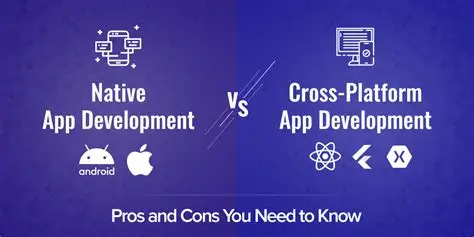In today’s digital era, mobile applications have become essential for businesses, startups, and individual developers. Choosing the right app development approach is crucial to deliver a seamless user experience, optimize costs, and achieve your business goals. At EliteLearnX, we guide learners to understand the different approaches to app development and select the best one for their projects.
1. Native App Development
Native apps are built specifically for one platform—iOS or Android—using platform-specific programming languages like Swift for iOS and Kotlin/Java for Android.
Advantages:
- High performance and speed
- Smooth and responsive user experience
- Full access to device features like camera, GPS, and sensors
Disadvantages:
- Expensive and time-consuming since separate codebases are needed for each platform
- Requires platform-specific expertise
Best For: High-performance apps with complex features, such as gaming apps or apps requiring heavy graphics and real-time processing.
2. Cross-Platform App Development
Cross-platform development allows developers to write a single codebase that works on multiple platforms. Popular frameworks include Flutter, React Native, and Xamarin.
Advantages:
- Reduces development time and cost
- Easier to maintain and update since one codebase supports multiple platforms
- Near-native performance for most apps
Disadvantages:
- Slightly lower performance compared to native apps
- Limited access to some platform-specific features
Best For: Apps targeting both iOS and Android with moderate complexity, such as e-commerce apps, social networking apps, or productivity tools.
3. Progressive Web Apps (PWA)
PWAs are web-based apps that work in a browser but function like native apps. They can be installed on devices, work offline, and provide push notifications.
Advantages:
- Low development cost and fast deployment
- No app store approval required
- Easy updates via a web server
Disadvantages:
- Limited access to device hardware features
- Offline functionality depends on browser support
Best For: Startups, simple apps, and projects that need quick deployment and broad accessibility.
4. Choosing the Right Approach
When deciding which approach to use, consider:
- Performance Needs: Choose native for high-performance apps
- Budget and Timeline: Cross-platform or PWA for cost efficiency
- Target Audience: Cross-platform to reach both iOS and Android users
- App Complexity: Native for complex apps; PWA for simple or content-driven apps
EliteLearnX – Learn Modern App Development
At EliteLearnX, we provide courses that teach native, cross-platform, and PWA development, guiding learners from basics to advanced projects. Learn to build responsive, scalable, and user-friendly apps for multiple platforms and elevate your development skills.


